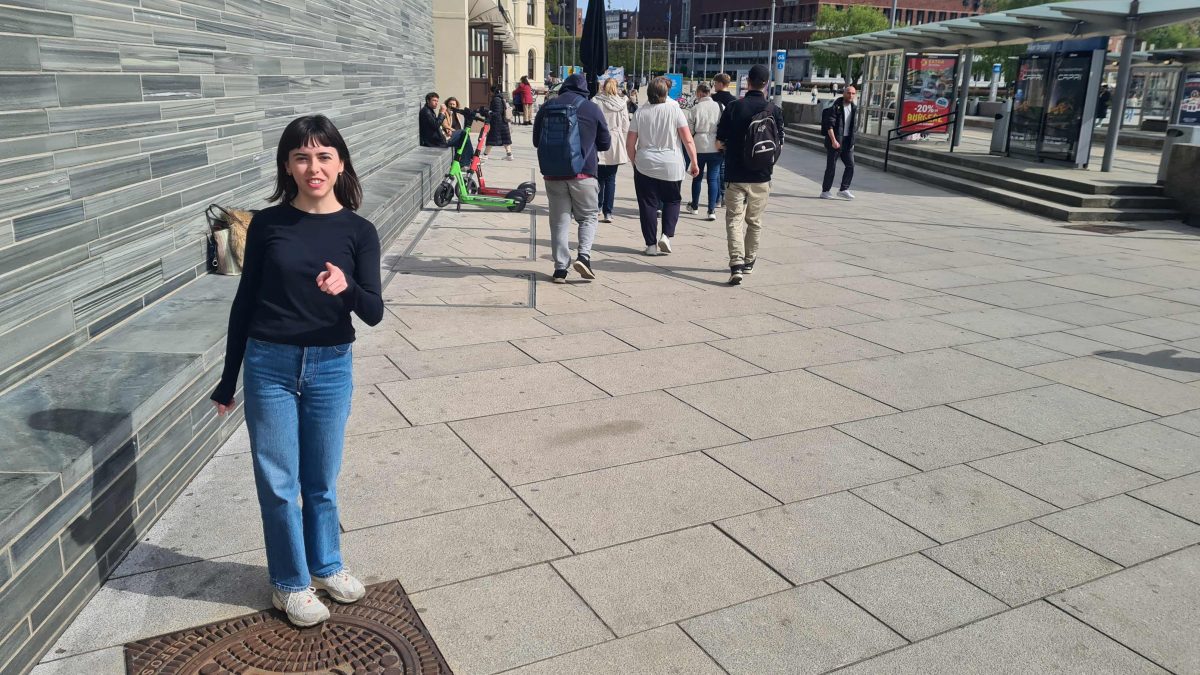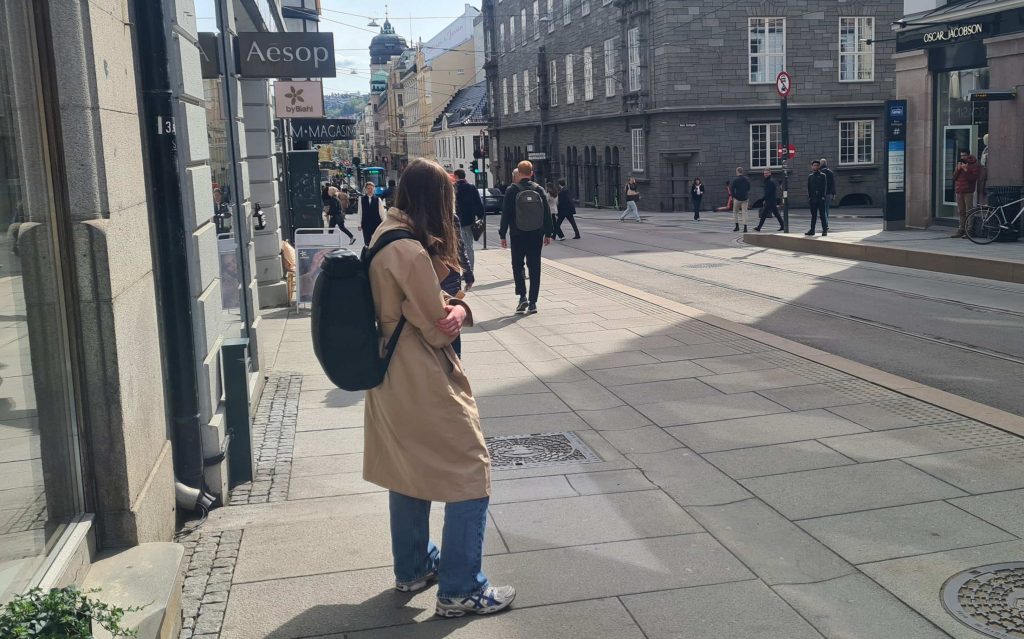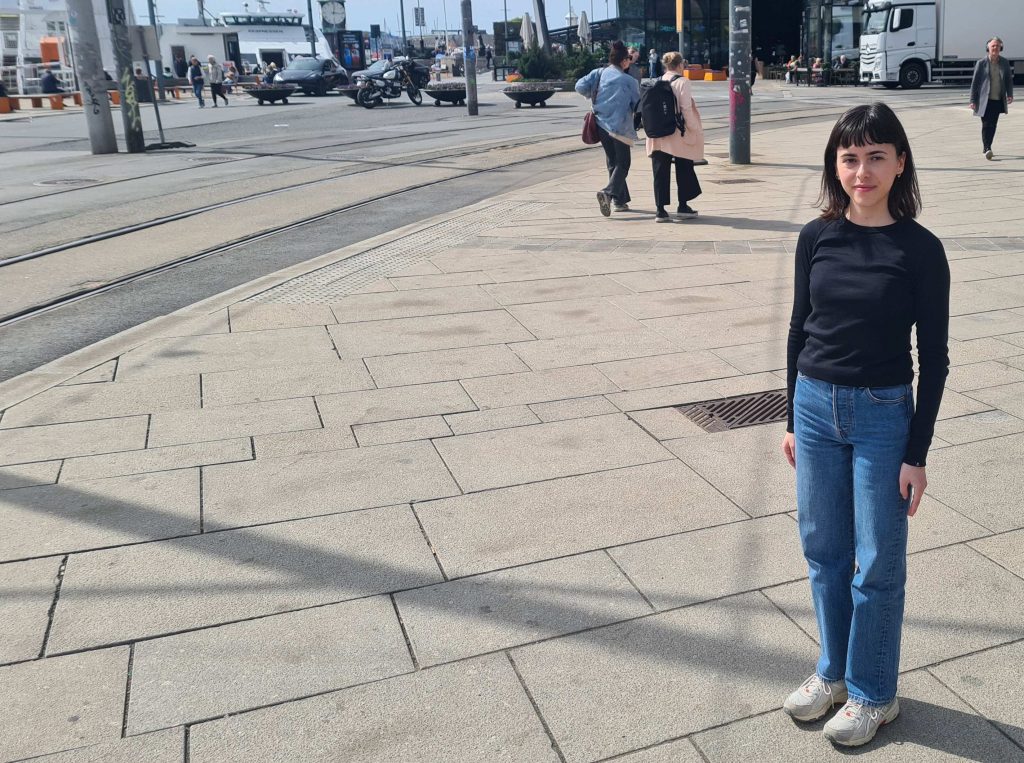An Italian gaze on Oslo’s clothing habits

From the eyes of an Italian guest who has just spent her first month in Oslo, I’ve noticed some clear differences in fashion habits and the general relationship people have with clothing here compared to larger Italian cities like Rome, Milan, or Florence.
By Rita Dominici
What hit me almost immediately, especially during my early morning commutes on Tram 17, squeezed in among others heading to work or university, was how people in Oslo tend to dress in a much more functional and comfortable way.
For instance, I frequently saw men probably headed to the office wearing suits but paired with sneakers. Another sign of this tendency is the use of backpacks instead of handbags or briefcases for work. I actually ended up switching from a handbag to a backpack myself! In Italy, though, that would be a more noticeable shift; many girls start using handbags instead of backpacks when starting university, more for style reasons than practicality.
This difference in the clothing choices made me think of a popular Italian saying roughly translated as “If you want to look good, you have to suffer a little” that I think perfectly captures the aesthetic mindset in most Italian cities, especially when it comes to clothing. Most people favor a more formal dress code, even if it means consciously sacrificing comfort, choosing style over ease.
Weather-resistant jackets and technical fabrics
Moreover, among older adults in Oslo, I’ve also noticed a strong preference for technical materials, especially when it comes to outerwear: I frequently see people dressed in weather-resistant jackets and technical fabrics. This is likely due to the climate, but it’s still notable.
Younger women, on the other hand, often wear trench coats and sweaters during this season, leaning slightly more towards aesthetic choices. Still, what all these choices seem to share is a sense of sobriety, particularly when it comes to colors: mostly greys, blacks, and beiges, which are easy to mix and match and very few bright tones.

In contrast, in many Italian cities, adults often embrace bolder colors: reds, electric blues, bright yellows both in clothing and accessories.
Another difference that stood out to me is the role of branding. In the way most Italian people dress, there’s often a visible “cult of the logo”, which seems far less present in Oslo. This doesn’t just influence adults, who may associate brands with status or quality, but also younger generations who use fashion and specific labels as a way to express their identity or social group.
Even children are affected: parents often dress their kids following current fashion trends and brand names, so the children end up dressed more like mini-adults. As a result, Italian children aren’t fully allowed to play and have fun outdoors, like in parks, for fear of getting their clothes dirty or ruining them.
Outdoor life regardless weather
In Oslo, the contrast couldn’t be clearer. You can tell just by looking at the way children are dressed that outdoor life is a big part of their daily routine, regardless of weather. I remember one morning after the rain when I saw a mother peacefully letting her 3- or 4-year-old kid play freely in the still wet ground of the park. I noticed that children here are usually dressed in bright colors and technical clothing with rain boots and full-body suits I had never even seen before.
These suits, which cover them from neck to ankle, are apparently worn when playing outside, letting them have fun without worrying about getting wet or dirty. I also saw many times groups of children accompanied by their teachers walking or playing in the park during school hours, all wearing bright yellow reflective vests: a further sign that practicality and safety are prioritized. In Italy, kids rarely leave school except for occasional field trips that take place during the warmer months.
Even then, they typically don’t wear any special clothing suited for the occasion. In fact, those were often the moments, especially for elementary school kids, when they would take off their classroom aprons, proudly showing the clothes they wore underneath.

To conclude, using my own eyes as the primary tool and taking an ethnographic approach, I’ve been able to connect what I’m experiencing here in Oslo with everything I’ve seen throughout my life as an Italian and as a visitor to Italy’s major cities, especially in terms of clothing habits.
What I’ve really noticed during this experience is that even the way I look at and observe the world around me—particularly people and how they dress—feels somewhat out of place in the Oslo context. For most Italians, observing and silently judging others and their way of dressing is much more common and socially accepted.
This difference in perception led me to ask myself: could it be that people in Italy tend to overdress because they know they’re more likely to be looked at and judged based on their appearance? Whereas in Oslo, since people don’t feel that same kind of gaze or social pressure, there’s simply no expectation to meet and as a result, most people just don’t really care what others are wearing?